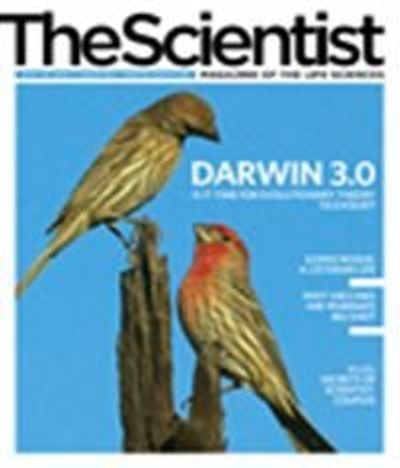Tricky T Cells
A new lymphocyte behind autoimmunity has created feverish excitement—and raised as many questions as it answers.

As the number of people suffering from autoimmune and inflammatory diseases continues to grow, scientists are racing to uncover therapeutic treatments by studying the signaling pathways that drive the disorders. The recent publication of several, sometimes competing, studies describing the complex roles of cytokines and lymphocytes has helped deepen the understanding of the molecular mechanics of the immune system, even leading to a Phase I clinical trial.
The role of cytokine Interleukin-17 (IL-17) as the source of cellular communication in autoimmune and inflammatory pathogenesis has been widely accepted for nearly a decade. And the discovery of its manufacturer, T helper cell 17 (or Th17), 5 years ago as an entirely new...
Previous experiments had shown that transforming growth factor-β ( TGF-β) caused T helper cells—which normally stimulate the immune system’s protective reaction to an attack—to differentiate into a Th17 lineage and create pathogenic cytokines. But, oddly enough, mouse models of multiple sclerosis (MS) showed that TGF-β increased during remission phases, suggesting it also had anti-inflammatory effects.
In 2007, Mandy McGeachy and colleagues at Schering-Plough Biopharma found that TGF-β, combined with the cytokine IL-6, induces T helper cells to differentiate into Th17 and produce IL-17. But without the presence of other pro-inflammatory mediators, such as IL-22 and other chemokines, this IL-17 did not stimulate a pathogenic response.
These nonpathogenic Th17 cells, described in this month’s Hot Paper, not only failed to induce tissue damage, they also failed to build up in significant numbers, and did not induce MS in a mouse model. Th17 cells cultured with another cytokine (IL-23), on the other hand, did induce MS in mice.
The study suggested that Th17’s role (and TGF-β’s) could not be pigeonholed, says Giorgio Trinchieri, director of the National Institutes of Health’s Experimental Immunology Center for Cancer Research, who was not a coauthor. “Their study was the first clear-cut paper to show that the function of Th17 isn’t fixed, that the cells serve multiple functions.” McGeachy agrees. “Scientists recently went too far in saying that Th17 cells caused all autoimmune diseases,” she says.
Subsequent research has both built on and contradicted the findings. “The field swings back and forth a lot,” says Daniel Cua, an immunologist at Schering-Plough Biopharma and last author of the paper. “Different papers continue to show different interactions between Th17 cells and cytokines. But these are complicated, complex relationships; it is going to take time before the field can work out all the details.”
As scientists have started to accept that Th17 is a nuanced actor in the immune system, they’re reaching similar conclusions about the other players in autoimmunity, such as TGF-β.
While McGeachy and colleagues’ paper found that the differentiation between the damaging and protective roles of T cells wasn’t solely influenced by TGF-β, scientists still believed it played a part. The publication of another Hot Paper in 2008 by Liang Zhou, an immunologist at Northwestern University, and colleagues helped illuminate the finer details of how TGF-β controls the differentiation of Th17.
Previous studies had shown that transcription in the Th17 lineage is influenced by the orphan nuclear receptor RORγt. Zhou and his team found that RORγt, in turn, is controlled by TGF-β-induced Foxp3. The researchers tested the relationships of the three factors by manipulating the concentration levels of TGF-β in intestinal T cells. They found that mice with a higher concentration of TGF-β have more Foxp3, and this Foxp3 inhibits RORγt. With RORγt inhibited, T cells differentiated into regulatory T cells (Tregs), which protected the mice from autoimmune disease. Conversely, a lower concentration of TGF-β induced a lower concentration of Foxp3, leading to a higher expression of RORγt. This drove T cells to become Th17 cells, which become pathogenic in later steps and cause autoimmune diseases.
The importance of TGF-β in immune function in humans, as well as how the mechanics of this system differ from mice, is currently being debated through a series of papers. Recent studies have shown that TGF-β works in combination with different cytokines in murine versus human models to stimulate the differentiation of T cells into Th17, which raises questions over what factor is the dominant driver of autoimmunity.1
Recent studies, including one from McGeachy and colleagues published in Nature Immunology in March 2009,2 have also solidified the importance of another actor in driving Th17 pathogenesis: IL-23. And the slowly emerging understanding of the molecular mechanics behind autoimmune disease signaling have culminated in a Phase I therapy targeted at preventing IL-23 from binding to its receptor. The drug, developed by McGeachy and colleagues, is currently being tested in psoriasis patients by Schering-Plough Biopharma.
“The therapeutic potential in understanding the mechanisms behind the lineage of T helper cells, and the details of how these factors work and interact with each other, is huge,” says Zhou. “It seems like we find something new every day.”
| Data derived from the Science Watch/Hot Papers database and the Web of Science (Thomson ISI) show that Hot Papers are cited 50 to 100 times more often than the average paper of the same type and age. M.J. McGeachy et al., “ TGF-βeta and IL-6 drive the production of IL-17 and IL-10 by T cells and restrain Th-17 cell-mediated pathology,” Nat Immunol, 8(12):1390–97, 2007. (Cited in 180 papers) L. Zhou et al., “ TGF-βeta-induced Foxp3 inhibits Th17 cell differentiation by antagonizing RORγt function,” Nature, 453(7192):236–40, 2008. (Cited in 154 papers) |
Interested in reading more?




